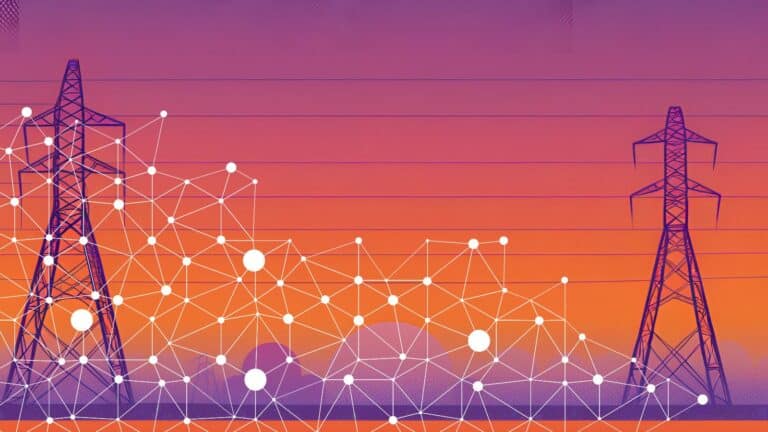On June 8, 2023, New Jersey’s Senate Environment and Energy Committee held a hearing on steps that the State can take to modernize the electrical grid and prepare for the interconnection of more renewable energy resources.
Good morning Chairman Smith, members of the Committee.
My name is Abraham Silverman, and I lead the Non-Technical Barriers to the Clean Energy Transition initiative at Columbia University’s Center on Global Energy Policy. Previously, I had the honor of serving as the General Counsel and then Executive Policy Counsel at the New Jersey Board of Public Utilities, working with President Fiordaliso and his excellent team. However, my comments today represent my own views.
I’m here this morning to discuss how we can affordably modernize New Jersey’s electric grid and, in particular, efficiently connect new resources to the grid. My testimony this morning covers three main topics:
- What is interconnection?
- Why it matters?
- What are the challenges & how can we do it better?
1. What is Interconnection?
Interconnection is the process of connecting a new electric generator to the grid safely and reliably. Any new generating facility is required to go through the interconnection process, whether it puts power out onto the grid, like offshore wind, a natural gas-fired generator or a large battery system, or whether it operates behind the customer’s meter, like a rooftop solar system.
To make sure that the electrical grid can safely accommodate the new generator, the utility is required to conduct a series of studies, which can range from processing a single one-page application for a rooftop solar system to an extensive modeling process that can take several years. The type of study is determined by factors such as:
- The size and location of the new generating facility;
- The size of the utility line the facility is connecting to; and
- Expected conditions on the electric grid at various times during the year.
All of these studies are set forth in the utility’s tariff and are conducted on a non-discriminatory basis in the order that the application was received. Based on the results of the study, the utility may authorize the generator to connect to the grid or may identify upgrades to the grid that are necessary to safely accommodate that power.
Utilities that operate more rural systems or with lower voltage transmission and distribution lines often require more upgrades to interconnect new generation. It’s this grid upgrade process that is responsible for many of the most severe bottlenecks in the interconnection process, and I’ll come back to those later.
Now let me turn to two other pieces of the interconnection puzzle that make can this process confusing:
First, there is a federal-state jurisdictional divide over who is responsible for the interconnection process:
- Interconnections to the distribution system, that’s the lower-voltage lines that power our businesses and homes, is subject to State jurisdiction, regulated by the Board of Public Utilities, and the study process is conducted exclusively by state public utilities.
- Interconnections to the transmission system, that’s the higher-voltage lines, or that seek to sell power into the PJM grid, are subject to the jurisdiction of the Federal Energy Regulatory Commission and the studies are conducted by PJM Interconnection, the regional grid operator, with assistance from the utility in whose service territory the project is interconnecting.
Second, the term “interconnection” actually covers two different things: first, the “generator interconnection” process that we’ve been talking about, but also “load interconnection”, which is the process for connecting new consumers of electricity, ranging from small customers, like a house, to enormous customers, like data centers or medium- and heavy-duty electrical vehicle charging depots.
While these are separate processes, at the end of the day, there’s only one grid. And cost-effective grid modernization strategy needs to look at building out the grid to meet both our supply and demand objectives, including electrification of the transportation and building sectors. After all, nothing makes your constituents angrier (and wastes more money) than having the utility come in and close down a street to upgrade a wire and then do it again next month.
2. Why it Matters:
The interconnection process has become one of the most significant barriers to the deployment of clean and conventional generation resources. It’s slowing down the energy transition, threatening grid reliability,[1] and costing consumers significantly more than necessary to meet our energy objectives.
- Nationally, there is enough generation to replace every generator in the country currently sitting in interconnection queues all over the country, ninety percent of which are clean energy or batteries.[2]
- Average processing times to complete interconnection studies have increased to over 4 years on average – even before construction of necessary grid upgrades begins.[3]
- Regionally, the grid operator for New Jersey and a dozen other states and the District of Columbia is experiencing multi-year delays in processing new generator interconnection requests, adding years to the timeline for deploying clean energy in New Jersey.[4]
Developers I talk to are concerned most about timeline and cost, as well as the predictability of the timeline and costs. The concerns over timeline apply both to how long it takes to complete the studies, as well as how long it takes the utility to procure and install the necessary equipment. As supply chain constraints have worsened over the past several years, the utility timeline for procuring key pieces of equipment, such as transformers, has increased, in some cases, by years.
While upgrade costs are always a concern, the uncertainty around cost allocation is often just as big a concern. Even the risk of a delay in the interconnection process directly increases costs to consumers. It is important to recognize that most generators going through the interconnection process today are clean energy resources receiving ratepayer funded incentives, such as Solar or Offshore Wind Renewable Energy Certificates. Thus, ratepayers are already (albeit indirectly) funding the necessary grid upgrades in the form of higher incentive costs. Further, lengthy interconnection timelines increase the risk of locking in outdated technology and slows down creation of green jobs in New Jersey.
3. What are the Challenges & How to Do Interconnection Better:
The interconnection story is a classic good news/bad news story. The bad news is that the interconnection process has become longer and more expensive over the past few years. But the good news – and I don’t want to lose the good news – is that we’re seeing an unprecedented amount of new generation being developed in New Jersey and throughout the PJM region. The overwhelming amount of this new generation are renewables and battery resources.
Regulators at every level are focused on making improvements. Here in New Jersey, the Board has several major proceedings dedicated to modernizing the grid, including its proceeding to update the Board’s decade-old interconnection rules. PJM is likewise in the midst of implementing the first phase of its “first ready, first served” interconnection queue reforms, with a second phase of reforms to start soon.
In addition to the reforms already in progress, there are a series of additional changes that could make the interconnection process faster, cheaper and more predictable, and may present the opportunity for legislative or regulatory reform.
Getting the grid ready.
One of the most significant steps that we can take to accelerate the interconnection process is to identify the places where generators are likely to locate, and then proactively build the grid out to meet the needs of these interconnecting generators.[5] There is significantly evidence that a proactive buildout of the grid results in significantly lower total costs than the piecemeal approach to grid expansion that we have today.[6]
Tackling grid expansion needs up front avoids the problem of having utilities make multiple small upgrades when one larger project would be faster or achieve significant economies of scale. Further, getting the grid ready in advance results in faster deployment of generation projects and could enhance New Jersey’s ability to access low-cost capital by reducing the risk profile of generation developments.
Solar development is one area that could be well-served by such a proactive approach. As the Committee knows, many of the best locations for solar development (as well as other energy-intensive economic growth) are located in rural parts of the state, where the grid often needs to be reinforced to accommodate new generation. Utilities in this situation could, under the careful oversight of the Board, proactively identify these renewable energy zones and begin the process of upgrading their grids even before a generator requests interconnection service. This model has been successfully deployed in a diverse array of states, including Texas,[7] and is currently being rolled out in California,[8] New York,[9] and as well as other states.
The Board’s recent offshore wind transmission partnership with PJM is a key example of proactively planning the transmission grid to accommodate the power from offshore wind producers selling power into the PJM system. As part of that initiative the Board identified where the offshore wind generators were likely to locate, and where the grid needed to be reinforced to accommodate that power, potentially shaving years off the development process and saving New Jersey consumers millions.
Modernize our interconnection cost allocation policies.
One of the most important issues around interconnection is who should pay for upgrades to the electric grid. Traditionally, costs have been assigned to the generation customer causing the upgrades, a concept known as “participant funding.” The benefit of participant funding is that the cost-causer pays to upgrade the electric grid, and ratepayers are largely insulated from the increased costs.
However, participant funding also has several drawbacks. First, the participant funding model assumes that individual generators will be the primary means of funding utility system expansion. However, in a high renewable energy penetration system, this assumption may not be feasible as the scope of the necessary upgrades may simply be too large for any individual generator, creating a cycle where multiple generations of proposed projects fail as they run up against the same significant upgrade.
Second, because the costs of interconnection are not knowable in advance, the participant funding methodology represents a significant headwind for clean energy developers seeking to do business in New Jersey.
Third, under the participant funding model, the utility is required to do detailed studies to determine the costs associated with interconnecting each proposed generator, which adds significantly complexity and time to the process. Further, when one generator drops out, it often triggers cascading restudies of other generators and multiple rounds of shifting cost responsibilities. A revised cost allocation methodology could lessen that complexity and minimize the number of restudies.
There are several potential approaches to reforming the participant funding model that the Committee may wish to explore:
- Socialize the costs of upgrading the distribution system for new clean energy generators (with stringent limits to ensure that projects do not lose the economic incentive to locate in the right places on the grid);
- Make interconnection costs more predictable by authorizing the Board to establish a fixed interconnection fee per-megawatt of installed capacity, and then use the proceeds to contribute to grid modernization costs. A fixed-fee approach could be structured so that generators, in total, pay 100% of the upgrade costs (i.e., on a revenue-neutral basis) or some lesser percentage, with ratepayers making up the difference; or
- Direct utilities to establish a list of the most significant limiting elements on their distribution systems and allow utilities to upgrade those elements with socialized rate recovery.
Various combinations of these approaches can also be utilized to ensure that interconnection customers retain the incentive to minimize interconnection costs, while reducing the risk and accelerating the interconnection process.
I appreciate the opportunity to testify before you today, and look forward to any questions.
[1] New Jersey’s regional grid operator, PJM Interconnection, has identified the slow rate of completion of new generator interconnections, coupled with planned retirements of existing fossil fuel generation, as a major reliability concern. See https://www.pjm.com/-/media/library/reports-notices/special-reports/2023/energy-transition-in-pjm-resource-retirements-replacements-and-risks.ashx.
[2] The Lawrence Berkeley National Laboratory’s “Queued Up: Characteristics of Power Plants Seeking Transmission Interconnection” initiative maintains an extensive database of interconnection queue data. See https://emp.lbl.gov/queues.
[3] Id.
[4] For additional details on the PJM interconnection reform process, see https://www.pjm.com/planning/services-requests/interconnection-process-reform.
[5] While my testimony today is focused on generator interconnections, the same holistic planning approach can be applied to reinforcing the grid to meet increased electricity usage, due to things like electrification of buildings and transportation.
[6] See, e.g., Comments of the New Jersey Board of Public Utilities to the Federal Energy Regulatory Commission in Docket No. RM21-17-000 (filed August 17, 2022) (citing examples of cost savings attributable to planned transmission).
[7] For a history of Texas’s Competitive Renewable Energy Zones, or CREZ initiative, see https://www.bakerinstitute.org/research/texas-crez-lines-how-stakeholders-shape-major-energy-infrastructure-projects.
[8] See, e.g., https://www.canarymedia.com/articles/transmission/california-has-a-new-7-3b-plan-to-fix-its-transmission-problems.
[9] See, e.g., New York Independent System Operator’s “Proposed Public Policy Transmission Needs/Public Policy Requirements, As Defined Under the NYISO Tariff,” (Filed Feb. 2023 and available at: https://www.nyiso.com/documents/20142/35671756/2023-02-21-NYISO-Comments-PPTN-2022-23-22E0633-CMPLT.pdf/f072e581-5cd2-5f21-c158-5322e61fef59).





